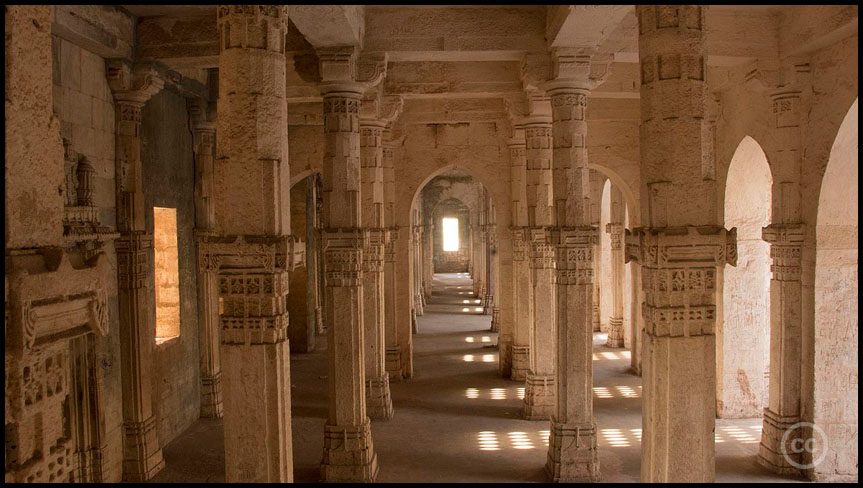One fort, many masters: The Uparkot fort

The Uparkot fort
The Uparkot fort in Junagadh, Gujarat, is one of the most unique forts in India. And it has its reasons.
The Uparkot fort was built by Chandragupta Maurya in the year 319 BCE. The Mauryan Empire declined in 184 BCE, and the fort changed hands. It remained under possession till 6th century CE, and was lost into oblivion for the next three-hundred years. It wasn’t until the 10th century CE that Uparkot was rediscovered from the outgrowth that had enveloped it. Beginning from the Solankis, the fort again witnessed a series of sieges, before being abandoned for good after the Mughal rule. What remains of it all now is a mosque – the Jama Masjid – with over a 140 pillars supporting it, a pair of stepwells, and a Buddhist cave dating around 2nd century CE, among other ruins.
The fort has withstood no less than 16 sieges in a span of 800 years. Nevertheless, it has the credit of having been under rich influences of Buddhism, Hinduism, and Islam. The era of the Nawabs, the colonization by the British – the fortress has been there, seen it!
Earlier known by the name ‘Revath Giri’, the fort of Uparkot did what other forts of its time deemed impossible. The fortress had such huge provisions to store water and food that could feed them for as much as twelve years! The two famous vaav (stepwells) of the fort, capable of hiding an entire army, were built during the reign of the Solankis, during the 11th and 12th centuries CE.





